I need to change page number from "1" to "—— 1 ——" (Not the short - so I can't simple change the page number style). How can I do this in VBA?
I tried the following code but the second —— is out of position somehow.
Selection.HomeKey unit:=wdStory
Selection.GoTo wdGoToPage, wdGoToNext, , "15 "
If ActiveWindow.View.SplitSpecial <> wdPaneNone Then
ActiveWindow.Panes(2).Close
End If
If ActiveWindow.ActivePane.View.Type = wdNormalView Or ActiveWindow.ActivePane.View.Type = wdOutlineView Then
ActiveWindow.ActivePane.View.Type = wdPrintView
End If
ActiveWindow.ActivePane.View.SeekView = wdSeekCurrentPageHeader
If Selection.HeaderFooter.IsHeader = True Then
ActiveWindow.ActivePane.View.SeekView = wdSeekCurrentPageFooter
Else
ActiveWindow.ActivePane.View.SeekView = wdSeekCurrentPageHeader
End If
Selection.WholeStory
Selection.Font.Size = 14
Selection.Font.Name = "宋体"
Selection.InsertAfter " —"
Selection.InsertBefore "— "
ActiveWindow.ActivePane.View.SeekView = wdSeekMainDocument
Selection.HomeKey unit:=wdStory
If ActiveWindow.View.SplitSpecial <> wdPaneNone Then
ActiveWindow.Panes(2).Close
End If
If ActiveWindow.ActivePane.View.Type = wdNormalView Or ActiveWindow.ActivePane.View.Type = wdOutlineView Then
ActiveWindow.ActivePane.View.Type = wdPrintView
End If
ActiveWindow.ActivePane.View.SeekView = wdSeekCurrentPageHeader
If Selection.HeaderFooter.IsHeader = True Then
ActiveWindow.ActivePane.View.SeekView = wdSeekCurrentPageFooter
Else
ActiveWindow.ActivePane.View.SeekView = wdSeekCurrentPageHeader
End If
Selection.WholeStory
Selection.Font.Size = 14
Selection.Font.Name = "宋体"
Selection.InsertAfter " —"
Selection.InsertBefore "— "
ActiveWindow.ActivePane.View.SeekView = wdSeekMainDocument
End Sub

